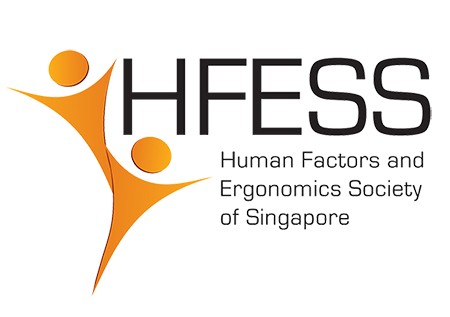Collaborating with Singapore Press Holdings to Raise Awareness
HFESS sharing tips on proper sitting posture for work to ensure minimal strain on muscles. Hope this helps in raising awareness of Ergonomics for people working from home.
Special thanks to Victoria Tham of Shin Min Daily News for this article.

What is Ergonomics?
Ergonomic designs allow the human body to work more productively and efficiently while
reducing fatigue, discomfort, and risk of injury.
The basic purpose of ergonomics is to allow the human body to work more productively and efficiently while reducing fatigue, discomfort, and risk of injury. Improper work-from-home setup can easily lead to various injuries such as backaches, neck and shoulder pains, and wrist strains.
KC Yong (48), President of the Human Factors & Ergonomics Society of Singapore (HFESS), said that during the COVID pandemic, people were working from home and he often heard complaints of physical strain and fatigue, but many do not know what may have caused them. For those who were aware of the problems, they bought ergonomic work desks, chairs and computer peripherals.
“Nevertheless, people should learn more about ergonomics and set up the workspace according to
the needs of the individual or family. For example, a small child may not be suitable for a normal desk,
and parents need to pay attention to the posture of the child when using the desk.”
Inappropriate Table Height
Some workers who work from home do not have a fix place to work. It can sometimes be at the desk
in the study room and sometimes at the dinning table. The ideal typing posture should be the height
of the hands is equal to the table. However, the height the dinning table is relatively high, so users
must raise their hands to type which is easy to cause wrist strain.
Table is too Narrow
If the space in the room is limited and only narrow table can be placed, using a thick and bulky monitor
will compromise the viewing distance that is required. Consumers could look for monitors that is
compact and has a VESA mount feature (four-hole attachment interface on the back of displays and
the screws used to fit those holes) that allows an alternative setup such as a Monitor Arm.
Thick Table Top
If the table top is too thick, it will prevent the arm-rest of the chair from sliding in. If the chair is unable to slide in, the users will not be able get full support for his back. If they are using a laptop, they can get a laptop riser that can be adjusted in height to lift the screen to a suitable height without having
to look down at the screen and out pressure on their neck and shoulders. The users can also use external input devices such as keyboard and mouse so that are able to work in a neutral posture.
Improper Lighting
Strong sunlight will make it difficult for us to see the small texts displayed on the monitor screen, causing eye fatigue. Users can install curtains or blinds, and place the monitor at a 90-degree angle to the window to reduce glare. If ceiling lights are used, ensure that the monitor is parallel to the ceiling lights, or avoid placing the monitor directly under the lights.
Strong sunlight will make it difficult for us to see the small texts displayed on the monitor screen,
causing eye fatigue. Users can install curtains or blinds, and place the monitor at a 90-degree angle to the window to reduce glare. If ceiling lights are used, ensure that the monitor is parallel to the ceiling lights, or avoid placing the monitor directly under the lights.

